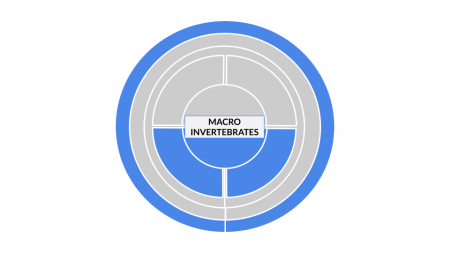Difference between revisions of "Macroinvertebrates"
From Sustainability Methods
Oskarlemke (talk | contribs) |
Oskarlemke (talk | contribs) |
||
| Line 15: | Line 15: | ||
| − | + | '''In short:''' Netting, kick sampling and taking benthic cores are methods for collecting macroinvertebrate samples to obtain information about the water quality of a river, lake or pond. | |
| + | {| class="wikitable" | ||
| + | |- | ||
| + | ! Header text !! Netting !! Kick sampling !! Taking benthic cores | ||
| + | |- | ||
| + | | Zone || nekton|| riffles in nekton|| benthal | ||
| + | |- | ||
| + | | Speed of water|| slow|| fast-flowing|| still or slow-moving | ||
| + | |- | ||
| + | | Depth of water|| shallow (pond nets), deep (tow nets)|| shallow|| shallow/ deep (using a boat) | ||
| + | |} | ||
Revision as of 13:55, 18 April 2023
| Method categorization | ||
|---|---|---|
| Quantitative | Qualitative | |
| Inductive | Deductive | |
| Individual | System | Global |
| Past | Present | Future |
In short: Netting, kick sampling and taking benthic cores are methods for collecting macroinvertebrate samples to obtain information about the water quality of a river, lake or pond.
| Header text | Netting | Kick sampling | Taking benthic cores |
|---|---|---|---|
| Zone | nekton | riffles in nekton | benthal |
| Speed of water | slow | fast-flowing | still or slow-moving |
| Depth of water | shallow (pond nets), deep (tow nets) | shallow | shallow/ deep (using a boat) |
The author of this entry is Anna-Lena Rau.
